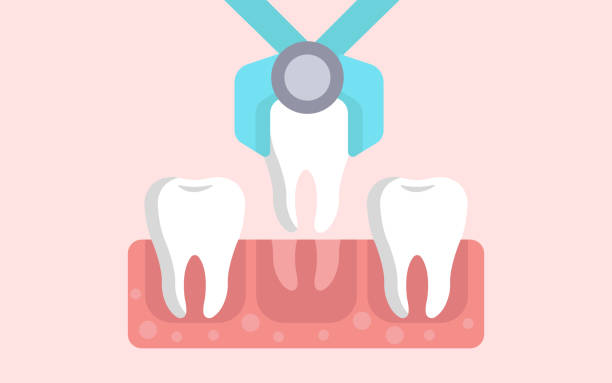Tooth Extraction Healing Timeline: Week by Week

Tooth extractions are sometimes necessary when a tooth is severely decayed, infected, or impacted. Healing from an extraction takes time and involves different stages. Whether you’re scheduled for tooth extractions in Glendale or are currently recovering, it helps to know what to expect during the healing process. This guide walks you through the typical recovery timeline, week by week, to help you stay on track for a smooth recovery.
If you’ve recently searched for a dentist nearby or visited a Glendale dental clinic for an extraction, the following information will help you understand what happens after the procedure.
First 24 Hours After Extraction
In the first 24 hours, your body begins the healing process by forming a blood clot in the empty socket. This clot is crucial for protecting the bone and nerves and starting tissue repair.
What to expect:
- Mild bleeding for a few hours
- Swelling around the area
- Pain or discomfort
- Limited mouth opening
Tips:
- Bite down on gauze to control bleeding
- Apply a cold pack to reduce swelling
- Avoid smoking, drinking through a straw, or spitting
- Stick to soft foods and rest
Days 2–3: Early Healing Stage
After the first day, the clot stabilizes, and the inflammation begins to decrease. You may still feel some discomfort and tightness in the jaw, especially if it was a surgical extraction.
What to expect:
- Reduced bleeding
- Mild to moderate swelling
- Possible bruising on the cheek or jaw
- Slight fever (in some cases)
Tips:
- Rinse your mouth gently with warm saltwater (after 24 hours)
- Continue eating soft foods like soup, yogurt, or mashed potatoes
- Take pain relief as prescribed or over-the-counter, if needed
Days 4–7: Tissue Repair Begins
By the fourth day, healing begins to progress more quickly. You should notice less pain and swelling. The tissue around the socket starts to close as new cells develop.
What to expect:
- Socket may appear whitish (normal healing tissue)
- Swelling and pain gradually decrease
- Increased ability to chew soft foods
Tips:
- Maintain gentle oral hygiene around the extraction site
- Stay hydrated and eat nutritious foods to support healing
- Avoid hard or crunchy foods that could irritate the socket
Week 2: Healing Continues
At this point, the socket should begin closing more visibly. While the deeper tissue is still healing, the surface of the gum may look almost fully healed. If you had stitches, your dentist might remove them now unless they were dissolvable.
What to expect:
- Most of the discomfort should be gone
- Minor tenderness at the site
- Gums starting to feel normal
Tips:
- Keep up with oral hygiene
- Chew on the opposite side of the mouth, if possible
- Continue with saltwater rinses to prevent bacteria buildup
Week 3: Bone and Tissue Strengthen
The third week is where the socket starts to rebuild from the inside. Bone and connective tissue continue to grow, strengthening the area where the tooth once was. Though not visible, this phase is essential for long-term oral health.
What to expect:
- Minimal soreness (if any)
- No visible swelling or bruising
- Gum area appears more normal
Tips:
- You can slowly return to normal eating habits
- Resume most regular dental care routines
- Check with your dentist if you feel any lingering pain
Week 4 and Beyond: Final Stages
Most patients feel fully recovered by the fourth week of tooth extraction. The socket may still be filling with bone, but the gum tissue is usually healed. If your extraction was in preparation for an implant or denture, your dentist may evaluate your progress at this stage.
What to expect:
- No discomfort
- Fully closed gum tissue
- Bone continuing to develop beneath
Tips:
- Maintain regular dental visits for check-ups
- Avoid skipping brushing or flossing
- Notify your dentist of any unusual symptoms like numbness or delayed healing
When to Call Your Dentist
Even though recovery usually goes smoothly, there are times when you should reach out to your dental provider. Contact your clinic if you experience:
- Severe pain after 3–5 days (could be dry socket)
- Persistent bleeding after 24 hours
- Signs of infection (pus, fever, foul smell)
- Swelling that worsens instead of improving
Looking for Tooth Extraction Care?
If you’re in need of tooth extractions in Glendale or dealing with post-extraction concerns, it’s important to stay connected with your dental provider throughout the healing process. Timely care and guidance help prevent complications and support faster recovery.
At Dar Dental Care, we provide expert care for extractions and complete follow-up support to ensure your comfort and health every step of the way. Whether you’re searching for a dentist nearby or a trusted Glendale dental clinic, our experienced team is here to help you heal confidently. Call us to schedule your appointment today.




